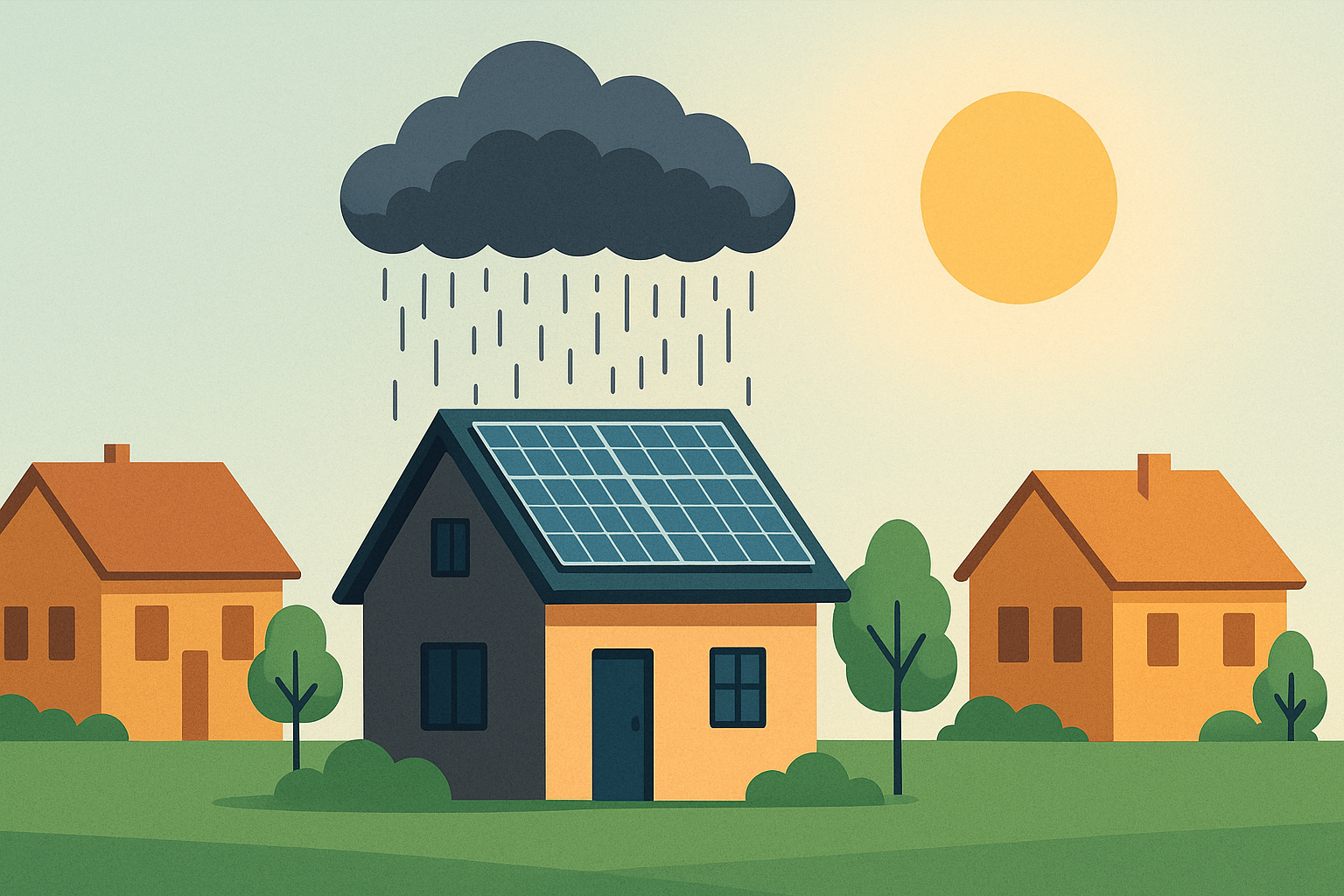When we started our solar journey, government support and regulations were an important part of the calculation. But now support for solar energy in Sweden is changing — just one month after our production began.
A New Reality for Micro-Producers
From July 2025, the so-called green technology deduction will be reduced from 20% to 15% for private individuals installing solar panels.
While this sounds like a big cut, it’s important to understand that the deduction only applies to the cost of the panels and their installation. In a modern solar system, the panels themselves often represent a smaller part of the total cost — while the inverter, batteries, smart control systems, and electrical work make up the rest and are not covered by the deduction.
This means that the actual difference in the total system cost is smaller than the percentage figure suggests. Still, it can influence the investment calculation, especially for those opting for a simpler system without storage.
More importantly: from January 2026, the tax credit for micro-production (currently 60 öre/kWh for surplus electricity) will be completely removed.
For those of us who have just started, this means that the compensation for surplus electricity will likely decrease — making self-consumption even more important going forward.
An Uneven Playing Field for Micro-Producers
These changes also raise a bigger question: how fair is the current system for small-scale producers?
Investing in solar panels is not free. Beyond the purchase itself, there are installation costs, sometimes permits, insurance adjustments, and in some cases even connection upgrades. We take on a financial risk, we contribute to Sweden’s climate goals, we help relieve the electricity grid during peak times, and we produce renewable energy that is often consumed directly by our neighbors.
Despite this, the conditions remain unbalanced:
- We receive about 20% less per kWh when we sell electricity (around 0.40 SEK) than what we pay when we buy (about 0.51 SEK). The main reason is VAT (MOMS): when we buy electricity, we must pay 25% VAT on top of the price — but when we sell electricity, no VAT is added to our compensation.
- We pay 77 öre in taxes and grid fees per purchased kWh – but only receive 3.82 öre in compensation for nätnytta (grid benefit) when we feed in electricity.
This means that when we sell electricity that may very well be consumed by the house next door, via the same transformer, the neighbor still pays a much higher price than what we get in return. The difference goes to electricity companies and grid operators, even though they haven’t produced the electricity.
From a consumer perspective, it’s hard to justify why this imbalance is so large. If micro-producers are to remain an important part of the energy mix, incentives should better reflect our actual contribution.
One solution could be a bonus system that rewards local, renewable production that is consumed nearby. Another could be to narrow the gap between the buying and selling price, so that the difference is not unreasonably large. Both models would make the investment more attractive while supporting a decentralized, resilient energy system.
How Other Countries Support Small-Scale Producers
In many countries, more balanced models exist for compensating those who invest in solar energy — especially micro-producers. A few examples:
- Germany – Feed-in Tariffs (FIT)
Under the EEG law, private households and small producers received a guaranteed fixed price per kWh — often above market rate — for up to 20 years. This long-term security was crucial to Germany’s rapid solar expansion. - Switzerland – Cost-Covering Feed-in (KEV)
Producers were compensated based on production cost, financed via a levy system. This provided stable returns, although later replaced with investment subsidies. - Australia – State Feed-in Tariffs
States such as New South Wales and Victoria have offered up to 60 cents AUD/kWh (around 6 SEK/kWh), making solar extremely profitable for households. - Switzerland (Local Energy Markets) – Peer-to-Peer Models
In pilot projects like Quartierstrom, prosumers can sell directly to neighbors at reduced grid fees — making local production more valuable.
These examples show that alternative models exist — approaches that strengthen the economy of micro-producers while accelerating the transition to renewable, decentralized electricity. Sweden could take inspiration here to design fairer support structures.
Support for solar energy in Sweden is waning.
The government’s reasoning is to gradually adapt incentives to a more mature market and redirect funding toward other energy priorities — such as grid expansion and nuclear power.
But for small-scale producers, the changes may feel like a step backward — especially for those who recently invested in solar under the old rules.
What Does This Mean for You?
If you are considering installing solar panels, it may be worth acting before the end of 2025. After that, one of the most favorable incentives for micro-production will disappear.
If you already have solar panels, like us, it may be time to look at how to maximize self-consumption — for example by:
- Storing surplus electricity in a battery
- Charging your EV during sunny hours
- Automating consumption with Home Assistant or similar tools
Our Reflection
When we began this journey, we knew that regulations could change — but we didn’t expect it to happen so quickly. At the same time, it’s a reminder of how important it is to build a flexible system that can adapt to new conditions.
We’ll continue to share our experiences — technical, economic, and strategic — as we navigate this new reality for solar energy in Sweden.

No responses yet